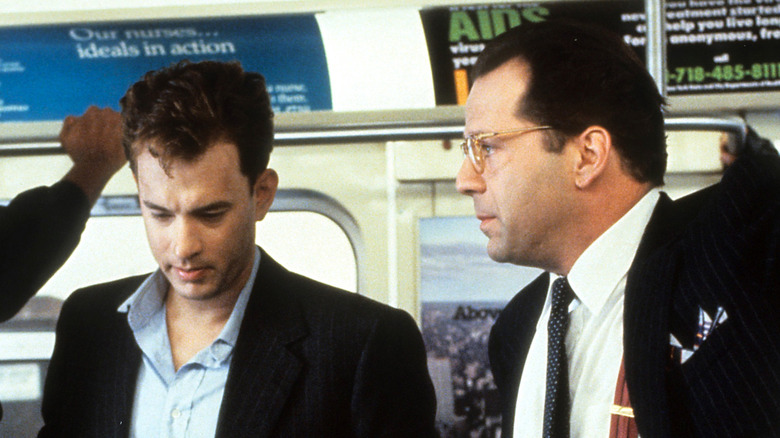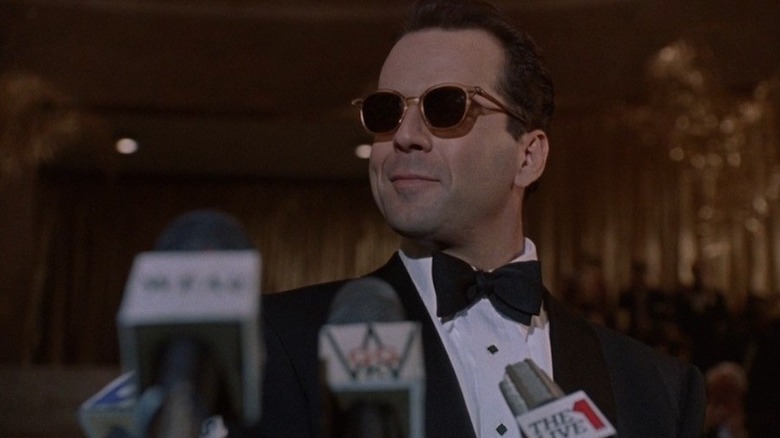Share this @internewscast.com
In the late ’80s and ’90s, Bruce Willis and Tom Hanks were among the era’s most prominent stars, each shining in their respective genres. While Willis was known as an action hero, Hanks was famous for his roles in comedy and drama. Their careers converged in 1990 when they co-starred in a dark comedy they both regard as a significant misstep: the ill-fated Brian de Palma project, “The Bonfire of the Vanities.”
Drawing from Tom Wolfe’s best-selling novel, “The Bonfire of the Vanities” centers around a New York City journalist played by Willis, who investigates a hit-and-run involving the ambitious girlfriend (Melanie Griffith) of a high-powered Wall Street executive, portrayed by Hanks. Despite its anticipation, the film barely recouped half of its modest budget in theaters and was labeled one of the year’s biggest disappointments — though, surprisingly, it escapes the list of Willis’ worst films according to Rotten Tomatoes.
In a conversation with Playboy writer David Sheff, six years after the film’s release, Bruce Willis candidly described “Bonfire” as ill-fated from the start. He remarked, “It was stillborn, dead before it ever got out of the box,” emphasizing that critics dismissed the movie even before it premiered, envisioning a more fitting cast. Willis conceded that the early criticism was warranted, admitting, “I was miscast. I know that Tom Hanks thinks he was, too.”
The Bonfire of the Vanities was a disaster from the start
Tom Hanks mirrored this sentiment, once telling Oprah Winfrey it was “one of the crappiest movies ever made.” While many Hanks films have moved audiences to tears, “Bonfire” did not; it was plagued not only by unremarkable content but also by production challenges.
Despite being an immensely popular book at the time, adapting “The Bonfire of the Vanities” for the screen was no straightforward task. Selecting an appropriate director was complex, and though Brian de Palma seemed an odd fit in retrospect, he only joined the project after another director left shortly before filming commenced. Additionally, the casting process was fraught with obstacles as choosing suitable actors proved taxing.
Reportedly, John Cleese and Jack Nicholson turned down roles in the film, while attempts to cast Steve Martin and Chevy Chase were unsuccessful. Ultimately, casting became such a hurdle that the studio compelled de Palma to hire Bruce Willis, then basking in fame from “Die Hard.” A contractual disagreement with co-star F. Murray Abraham resulted in his name being stripped from the credits. Even the film’s moderate budget was a burden, with a notorious 10-second Concorde shot costing $80,000. The film’s troubled production was so notorious that it inspired the book “The Devil’s Candy,” chronicling this cinematic catastrophe.









